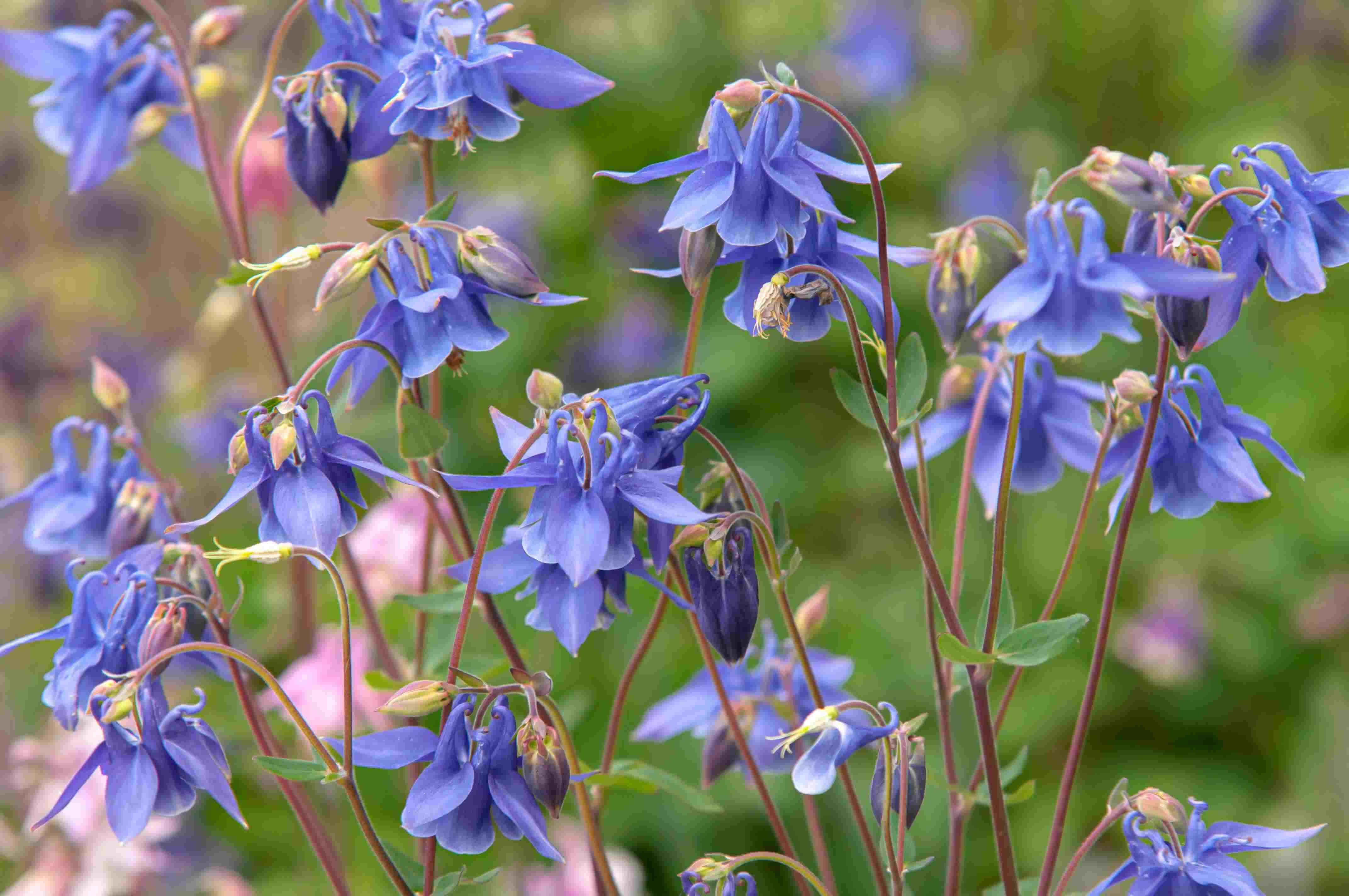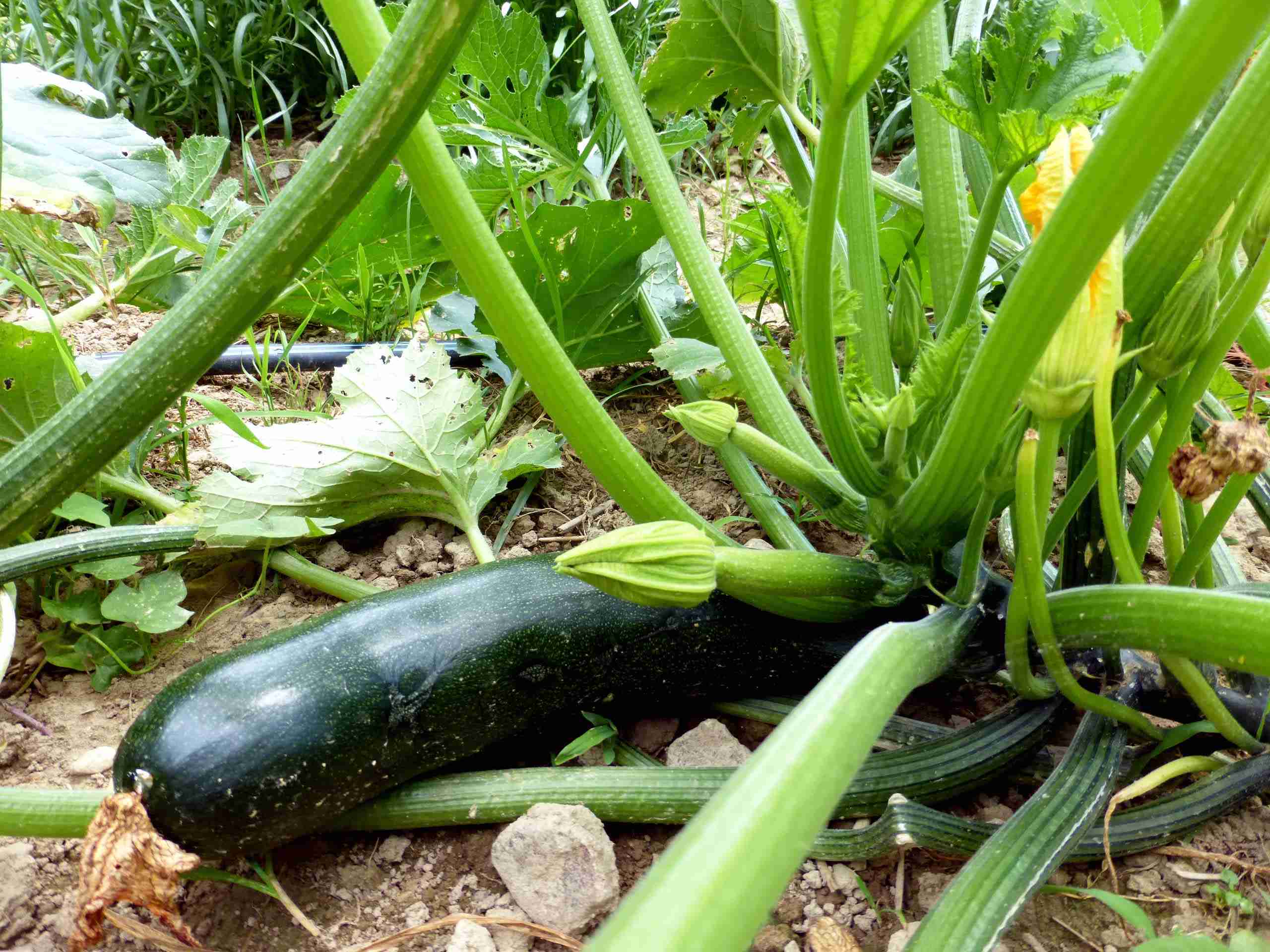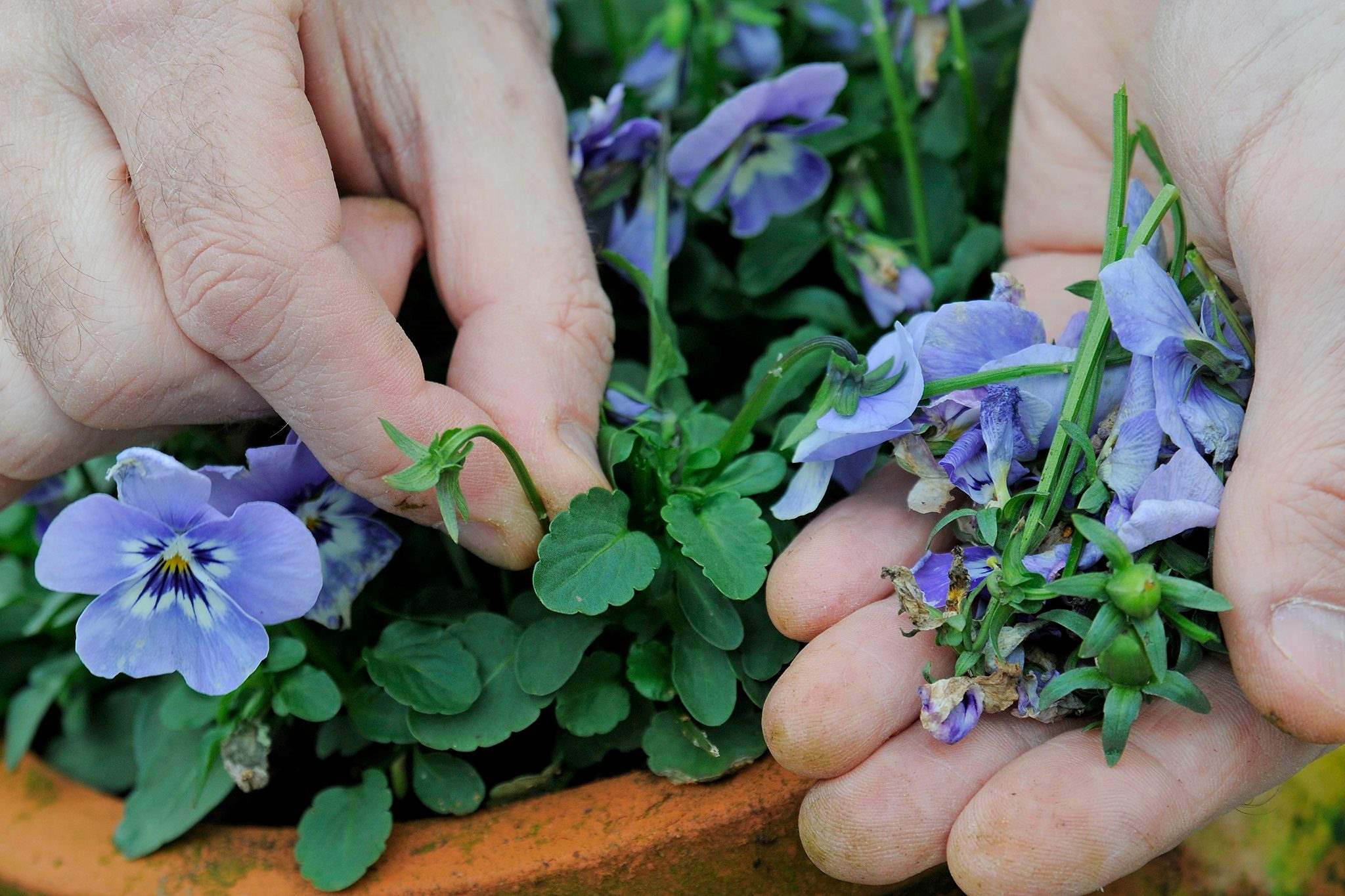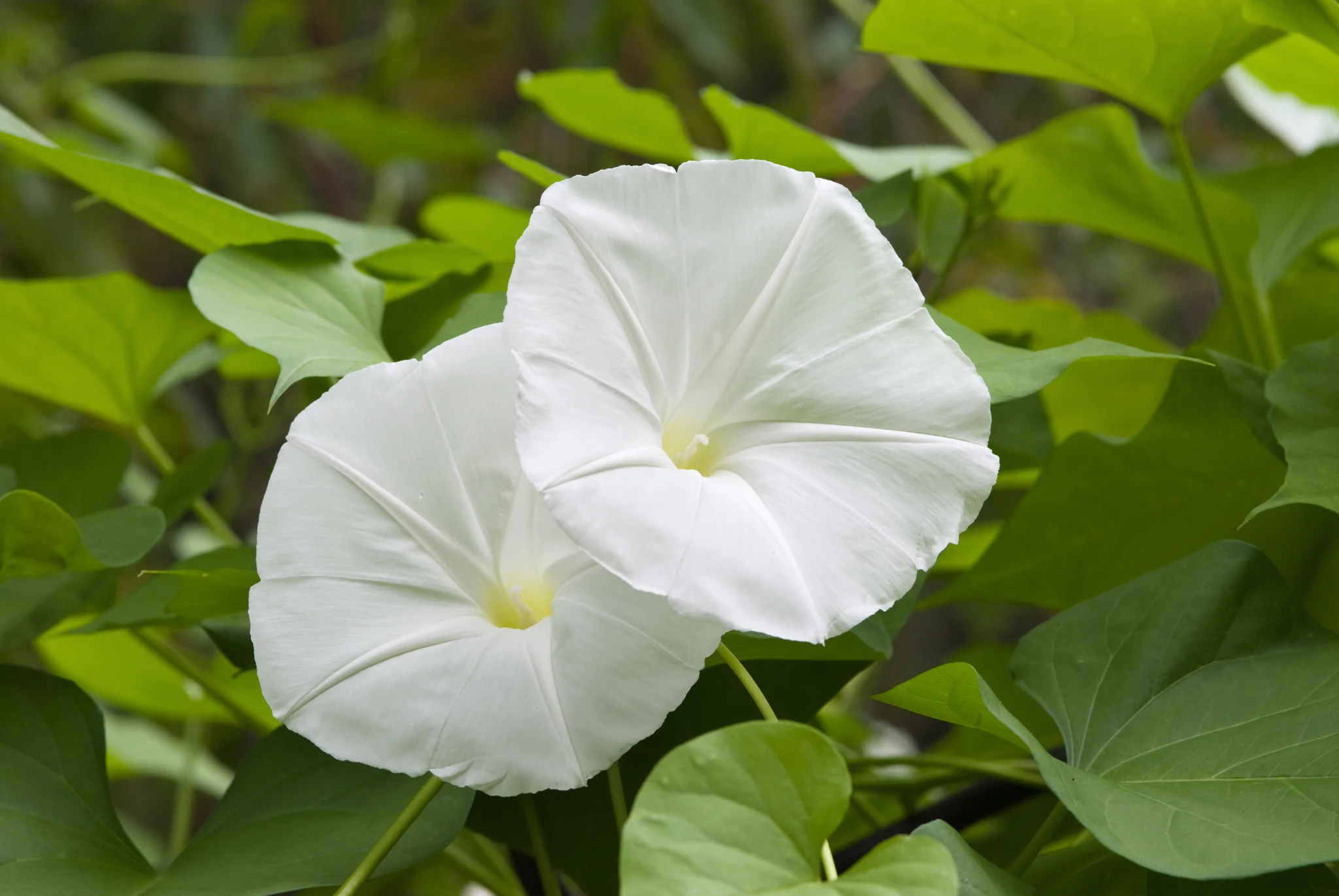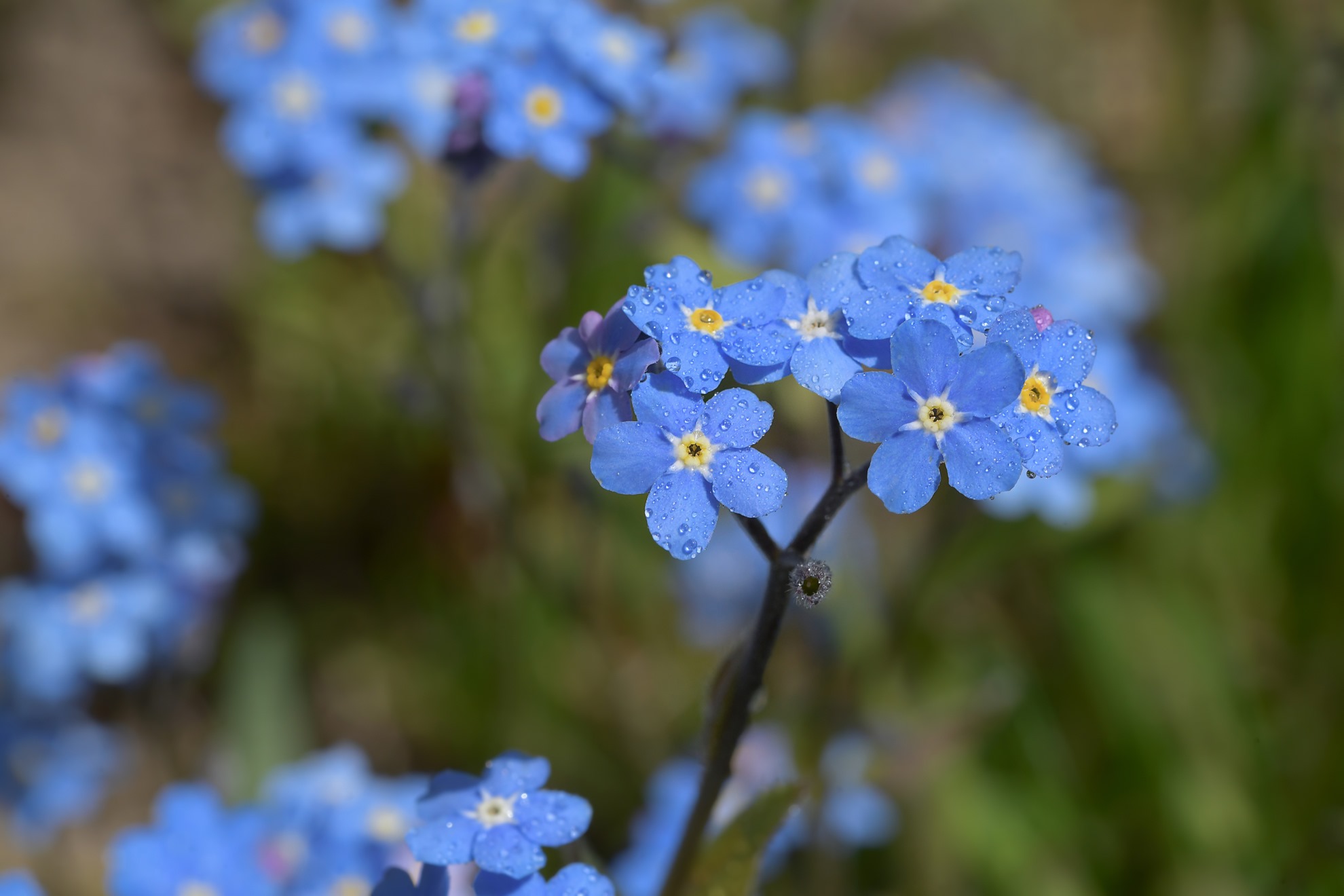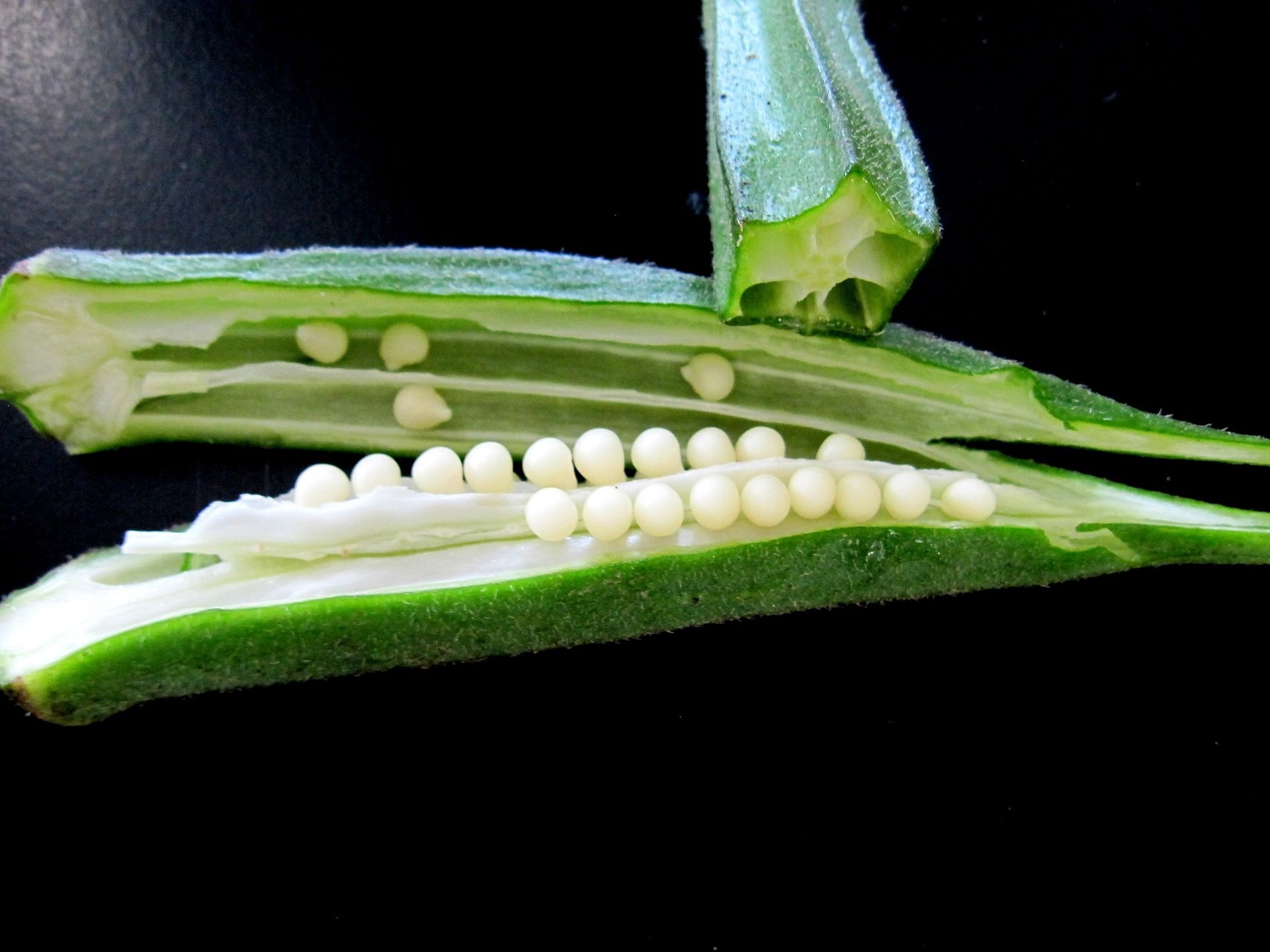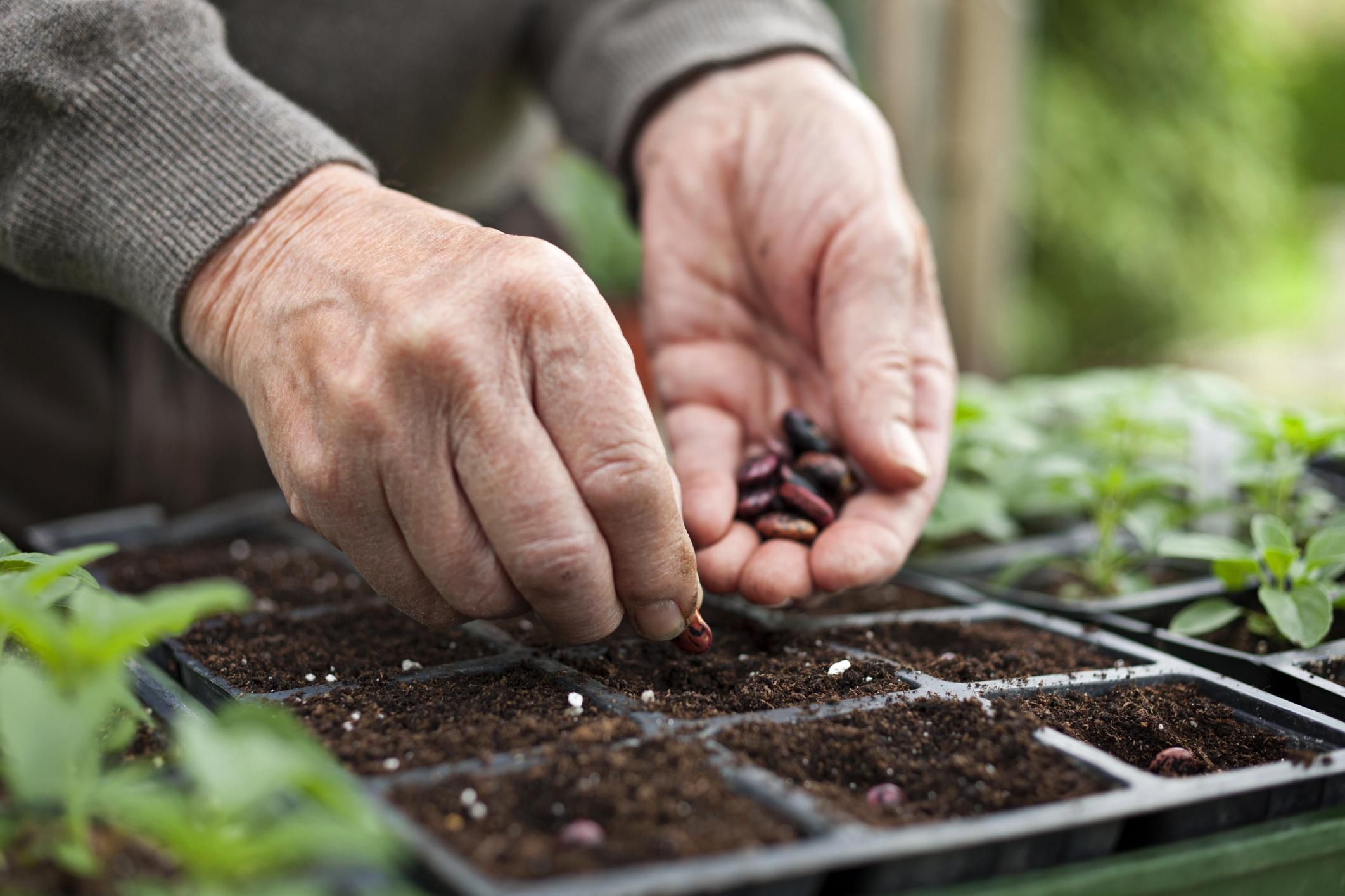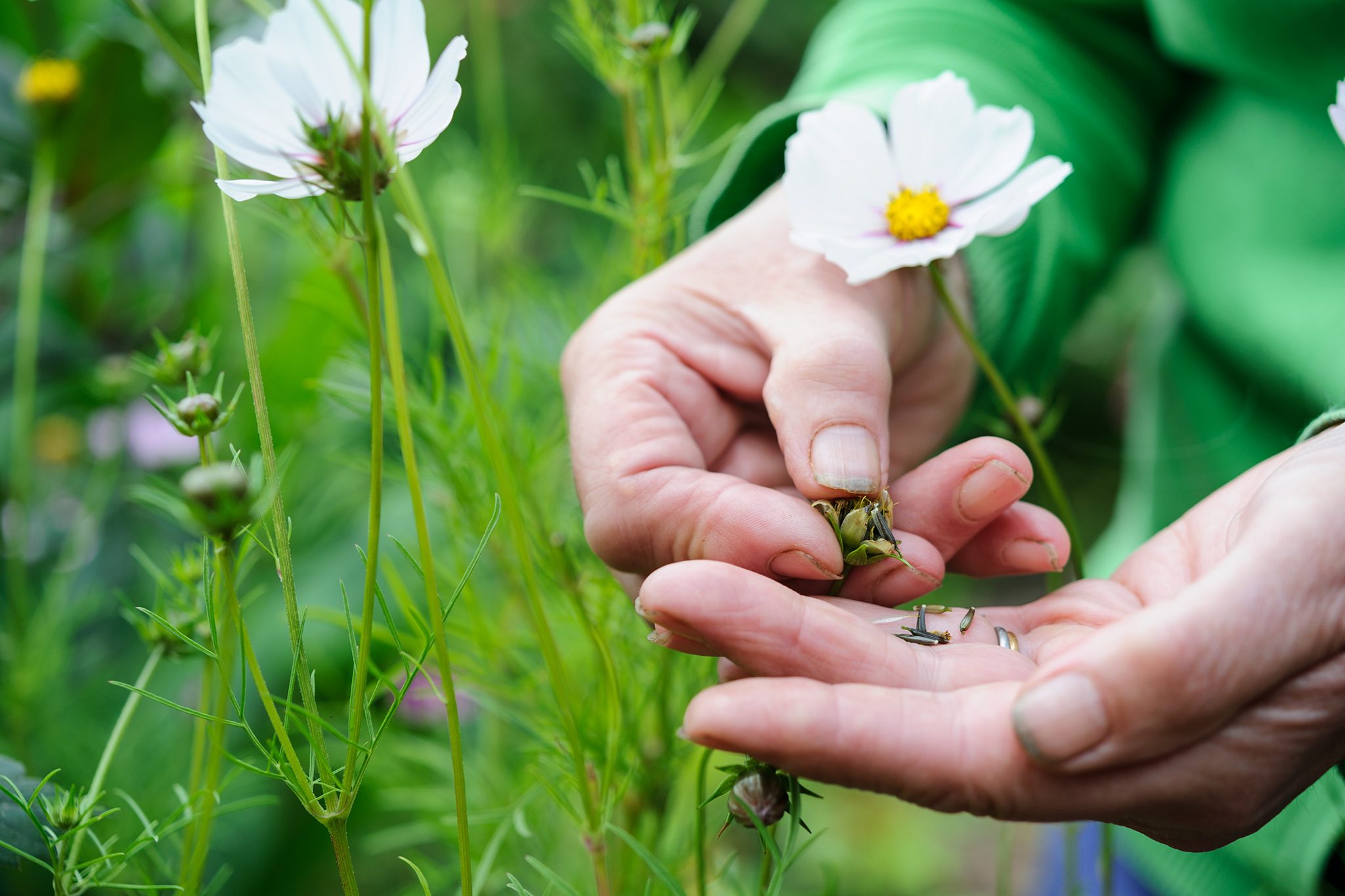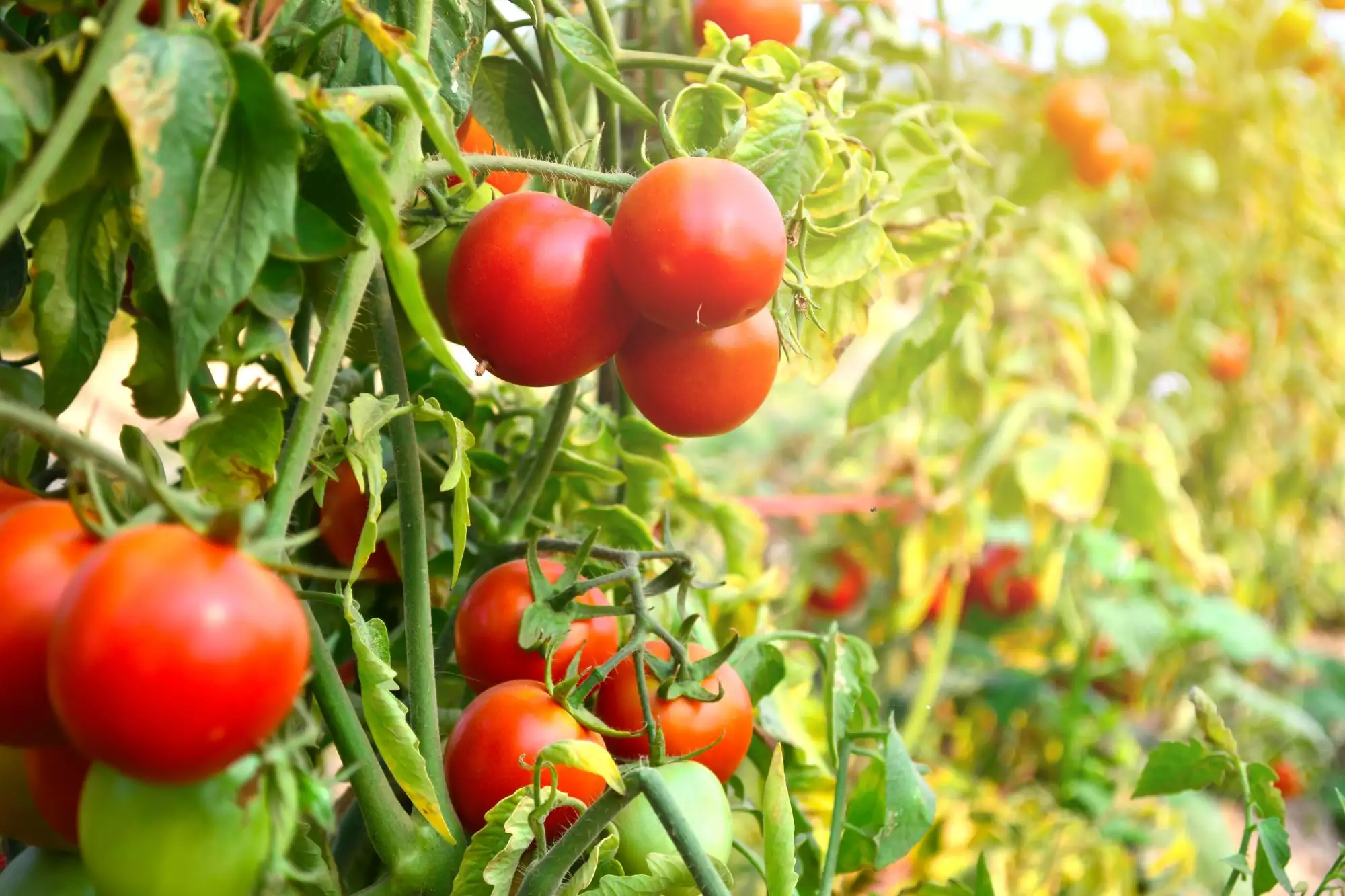Home>Gardening Techniques>Seasonal Gardening>When To Plant Flower Seeds For Spring


Seasonal Gardening
When To Plant Flower Seeds For Spring
Modified: February 10, 2024
Learn when to plant flower seeds for spring with our seasonal gardening tips. Start planning your garden early to ensure vibrant blooms.
(Many of the links in this article redirect to a specific reviewed product. Your purchase of these products through affiliate links helps to generate commission for Chicagolandgardening.com, at no extra cost. Learn more)
Table of Contents
Introduction
Welcome to the wonderful world of seasonal gardening! If you’re a gardening enthusiast or simply have a green thumb, you’re in for a treat. Planting flower seeds for spring is an art that brings beauty and joy to any garden or outdoor space. Whether you’re a beginner or an experienced gardener, knowing when and how to plant flower seeds is crucial for a successful and vibrant spring garden.
Spring is a season of rebirth and rejuvenation, a time when nature awakens from its winter slumber and bursts forth with a riot of colors. It’s the perfect time to plant flower seeds as the soil warms up and the days become longer. But before you embark on your gardening journey, there are a few factors to consider to ensure the best results.
One of the key considerations is the climate of your region. Different flowers have different temperature requirements, so it’s important to choose flower seeds that are well-suited to your specific climate. Some flowers prefer cooler temperatures, while others thrive in warmer weather.
Another aspect to consider is the amount of sunlight your garden receives. Most flowers need at least six hours of direct sunlight per day to grow and bloom. If your garden is shaded, you may need to choose shade-tolerant flower seeds or consider creating sunnier spots by pruning trees or using reflective surfaces.
Soil quality is also crucial for successful flower seed germination and growth. Well-drained, nutrient-rich soil provides the necessary foundation for healthy plants. Conduct a soil test to determine its pH level and nutrient content. This will help you make any necessary amendments before planting. Adding organic matter like compost or aged manure can greatly improve the soil’s structure and fertility.
Once you’ve assessed these factors, it’s time to choose the right flower seeds for your spring garden. With countless options available, it can be overwhelming to make a decision. Consider factors like flower color, height, growth habit, and bloom time. Think about the overall design and desired aesthetic of your garden. Do you want a wildflower meadow, a cottage garden style, or a formal display? Each choice will lead to a different selection of flower seeds.
Now that we’ve covered the basics, it’s time to dive into the specific types of flower seeds to consider for your spring garden. From vibrant annuals to delicate perennials, there’s a wide variety of flowers to choose from that will transform your garden into a colorful and inviting haven.
Factors to Consider Before Planting Flower Seeds
Before you rush off to buy flower seeds and start planting, there are a few important factors to consider. These factors will help ensure the success of your spring garden and provide a favorable environment for your flower seeds to thrive.
The first factor to consider is the climate of your region. While some flower seeds are adaptable to different climates, others have specific temperature requirements. It’s important to choose flower seeds that are well-suited to the climate in order to give them the best chance of germination and growth. If you live in a region with long, cold winters, you might opt for cold-tolerant flower seeds that can withstand frost. On the other hand, if you live in a warmer climate, you’ll want to choose flower seeds that can handle the heat and humidity.
Another crucial factor to consider is the amount of sunlight your garden receives. Most flowers need ample sunlight to grow and bloom. Take note of how many hours of direct sunlight your garden gets each day and choose flower seeds accordingly. If your garden is shaded, you can still find flower seeds that thrive in partial shade, allowing you to create a beautiful garden even in spaces with limited sunlight.
Soil quality is another important consideration. The health and fertility of your soil can greatly impact the success of your flower seeds. It’s important to have well-drained soil that doesn’t become waterlogged. If your soil is heavy and compacted, it’s a good idea to amend it with organic matter like compost to improve its structure and drainage. Conducting a soil test can also help determine the pH level and nutrient content of the soil, allowing you to make any necessary adjustments to optimize conditions for your flower seeds.
Along with climate, sunlight, and soil, it’s also essential to consider the overall design and purpose of your garden. Think about the desired height, color, and bloom time of the flowers you want to plant. Consider whether you want a garden that attracts pollinators or one that provides a serene and peaceful atmosphere. By carefully considering these factors, you can choose flower seeds that align with the vision you have for your garden.
By taking these factors into account before planting flower seeds, you’ll create an environment that is conducive to successful germination and growth. Your flowers will have the best chance of flourishing and providing a stunning display in your spring garden.
Types of Flower Seeds to Plant for Spring
When it comes to choosing flower seeds for your spring garden, the options are plentiful. From vibrant annuals to delicate perennials, there are countless varieties to suit every gardener”s preferences. Here are a few popular types of flower seeds to consider planting for a stunning spring display:
- Tulips: Tulips are classic spring flowers known for their large, colorful blooms. They come in a wide range of colors and varieties, from single and double blooms to fringed and parrot tulips. Plant tulip bulbs in the fall to enjoy their breathtaking beauty in the spring.
- Daffodils: Daffodils, also known as narcissus, are cheerful spring bulbs that herald the arrival of spring. With their bright yellow, white, or orange blooms, daffodils add a pop of color to any garden. They are easy to grow and come in various sizes and flower forms.
- Pansies: Pansies are cool-season annuals that thrive in early spring. They are prized for their vibrant and whimsical “faces” and come in a wide range of colors. Pansies are great for adding charm to borders, containers, or hanging baskets.
- Snapdragons: With their tall spikes of colorful flowers, snapdragons bring vertical interest to any garden. They are available in a range of hues and are especially popular for their fragrance. Plant snapdragon seeds in early spring and enjoy their flowers throughout the season.
- Nasturtiums: Nasturtiums are annual flowers with beautiful, edible blooms in shades of red, orange, and yellow. They have a trailing habit, making them ideal for hanging baskets or cascading over walls. Nasturtiums are not only visually appealing but also attract beneficial insects to the garden.
- Roses: Roses are timeless flowers that add elegance and romance to any garden. While roses can be a bit more demanding in terms of care and maintenance, the reward is well worth it. Choose from a wide range of rose varieties, including hybrid teas, floribundas, climbers, and shrub roses.
These are just a few examples of the many flower seeds available for planting in spring. When selecting flower seeds, consider factors like height, color, growth habit, and bloom time to create a garden that is visually pleasing and suits your personal preferences.
Remember to check the specific planting instructions for each type of flower seed. Some may require direct sowing in the soil, while others may benefit from starting seeds indoors and transplanting seedlings later. With proper care and attention, the flower seeds you choose will reward you with a spectacular spring garden full of color and fragrance.
Timing for Planting Flower Seeds
Timing is crucial when it comes to planting flower seeds for a successful spring garden. The right timing ensures that your seeds have optimal growing conditions and allows them to flourish into beautiful blooms. Here are some guidelines to help you determine the ideal timing for planting flower seeds:
Start Indoors: Many flower seeds benefit from an early start indoors, especially those with longer germination periods or those that require a longer growing season. This is particularly true for perennial flower seeds or varieties that need a longer period of establishment before they can bloom. Start these seeds indoors 6 to 8 weeks before the last expected frost date in your area. Make sure to provide them with adequate light, warmth, and moisture for healthy seedling development.
Direct Sow: Some flower seeds can be sown directly into the ground when the soil has warmed up and there is no longer a risk of frost. This is typically in late spring or early summer, depending on your region. Examples of flower seeds that can be directly sown include zinnias, sunflowers, marigolds, and cosmos. Follow the specific instructions on the seed packet for the best results, as different flowers have different soil temperature requirements for germination.
Consider Frost Tolerance: It’s important to consider the frost tolerance of the flower seeds you plan to plant. Some varieties are more cold-hardy and can withstand light frosts, while others are more sensitive and require warmer temperatures. As a general rule, wait until after the last expected frost date in your area before planting frost-sensitive flower seeds, such as impatiens or begonias, to avoid damage to the seedlings.
Observe the Weather: While general guidelines can help with planting timing, it’s also essential to take into account the weather conditions in your specific region. Pay attention to the local climate, including temperature fluctuations and the average date of the last frost. Weather patterns can vary from year to year, so adapting your planting schedule based on current conditions can result in more successful germination and growth.
Succession Planting: To prolong the flowering season and ensure a continuous display of blooms, consider practicing succession planting. This involves planting smaller batches of flower seeds at different intervals throughout the season. By staggering your plantings, you’ll have a steady supply of flowers blooming from early spring to late summer or even early fall.
Remember to read the specific instructions provided on the seed packet for each type of flower seed. These instructions will often include recommended planting dates and special considerations for that particular flower variety.
By carefully considering the timing for planting flower seeds, you’ll give your plants the best chance to thrive and create a vibrant and beautiful spring garden.
Preparing the Soil for Planting
Preparing the soil is a crucial step in creating the ideal conditions for planting flower seeds. Proper soil preparation provides a healthy foundation for your seeds to germinate and grow into strong and vibrant plants. Here are some essential steps to follow when preparing the soil for planting:
Clear the Area: Begin by clearing the area where you plan to plant your flower seeds. Remove any weeds, rocks, or debris that may hinder seed germination or impede plant growth. This will help create a clean and clear space for your flowers to thrive.
Loosen the Soil: Use a garden fork or spade to loosen the soil. This breaks up compacted soil and improves its structure, allowing for better drainage and root penetration. Loosening the soil also helps create a more hospitable environment for beneficial soil organisms that contribute to plant health.
Remove Weeds: Take the time to remove any existing weeds from the area. Weeds not only compete with your flower seeds for water, nutrients, and sunlight, but they can also harbor pests and diseases. Removing weeds reduces competition and sets the stage for your flower seeds to thrive.
Add Organic Matter: Incorporate organic matter into the soil to enhance its fertility and structure. Organic matter, such as compost or well-rotted manure, improves drainage, retains moisture, and provides essential nutrients for plant growth. Spread a layer of organic matter over the soil surface and work it into the top few inches of soil using a garden fork or tiller.
Amend the Soil: Conduct a soil test to determine the pH level and nutrient content of the soil. This will help you identify any deficiencies or imbalances that may affect plant growth. Based on the results, amend the soil with the appropriate nutrients or amendments to optimize the soil conditions for your flower seeds. For example, if the soil is too acidic, you can add lime to raise the pH level.
Level and Rake: Level the soil surface using a rake, removing any large clumps or stones. Raking helps create a smooth and even surface, making it easier to sow the flower seeds and ensuring they make good soil contact for germination.
Water the Soil: Before planting your flower seeds, thoroughly water the prepared soil. This ensures that the soil is adequately moistened, providing an ideal environment for seed germination. Allow the water to penetrate deeply into the soil before proceeding with sowing the seeds.
By following these steps for preparing the soil, you’ll create a favorable environment for your flower seeds to flourish. The improved soil structure and fertility will support healthy root growth and provide the foundation for beautiful and abundant blooms in your spring garden.
Planting Flower Seeds for Spring
Now that the soil is prepared, it’s time to plant your flower seeds and watch your garden come to life. Proper planting techniques will ensure that your seeds have the best chance of germination and growth. Here’s how to plant flower seeds for a successful spring garden:
Read the Instructions: Before planting, carefully read the instructions on the seed packet. Each type of flower seed may have specific requirements for planting depth, spacing, and other considerations. Follow these instructions to give your seeds the best start.
Sow the Seeds: Use your finger or a small trowel to create small furrows in the soil. The depth of the furrows will depend on the specific seed instructions. Gently place the seeds into the furrows, spacing them according to the recommended distance. Cover the seeds with soil, lightly patting it down to ensure good seed-to-soil contact.
Water Thoroughly: After planting, water the area gently but thoroughly. Use a watering can or a gentle mist setting on a hose to avoid displacing the seeds. Keep the soil consistently moist during the germination period, which can vary depending on the flower seeds you are planting.
Label and Mulch: Label the planting area with the name or type of flower seeds you’ve sown. This will help you keep track of your garden and identify the different flowers as they begin to sprout. Consider applying a layer of organic mulch, such as straw or wood chips, to help retain moisture, suppress weed growth, and provide insulation for the seeds.
Provide the Right Conditions: Different flower seeds have different requirements for temperature and light. Ensure that your flower seeds are exposed to the appropriate conditions for successful germination. Some seeds may need a period of cold stratification or exposure to light, while others require darkness to germinate. Follow the instructions on the seed packet for optimal conditions.
Monitor and Maintain: Once your flower seeds have germinated, it’s important to monitor their progress and provide proper care. Keep an eye on the moisture levels in the soil and adjust your watering as needed. Thin out seedlings if they are overcrowded, allowing for adequate space for each plant to grow. Provide support, such as stakes or trellises, for taller-growing varieties to prevent them from flopping over.
Protect from Pests and Disease: Be vigilant for any signs of pests or diseases and take appropriate measures to protect your flower seedlings. Implement organic pest control methods, such as handpicking insects, using insecticidal soap, or attracting beneficial insects to your garden. Remove any diseased plants immediately to prevent the spread of infection.
By following these steps, you’ll give your flower seeds the best chance of success. With patience, care, and a little bit of luck, you’ll soon be rewarded with a vibrant and colorful spring garden that brings joy and beauty to your outdoor space.
Caring for Flower Seedlings
After your flower seeds have germinated and sprouted into seedlings, it’s important to provide them with proper care to ensure their healthy development and growth. Caring for flower seedlings involves attention to watering, fertilizing, providing light, and protecting them from pests and other threats. Here are some essential tips to care for your flower seedlings:
Watering: Seedlings have delicate root systems that require consistent moisture. Water them gently and regularly, keeping the soil evenly moist but not waterlogged. Use a watering can or a spray bottle with a fine mist setting to avoid disturbing the seedlings. Adjust your watering schedule based on the moisture levels in the soil and the specific needs of the flower seedlings.
Fertilizing: As your seedlings continue to grow, they may benefit from a gentle dose of fertilizers to provide them with essential nutrients. Use a balanced, water-soluble fertilizer diluted to half strength to avoid overfeeding. Apply the fertilizer every two to three weeks, following the recommended instructions on the label. Avoid over-fertilizing, as this can lead to excessive foliage growth at the expense of flower production.
Providing Light: Adequate light is crucial for the healthy development of seedlings. Place them in a bright location, preferably near a window with indirect sunlight. If natural light is limited, consider using fluorescent grow lights positioned a few inches above the seedlings for 12 to 16 hours a day. Adjust the height of the lights as the seedlings grow to maintain an optimal distance.
Protect from Pests: Seedlings are vulnerable to pests such as aphids, slugs, and snails. Regularly inspect your seedlings for signs of pest damage, such as chewed leaves or sticky residue. Implement organic pest control methods such as handpicking insects, using insecticidal soap, or introducing natural predators like ladybugs or lacewings to your garden. Providing good air circulation can also help deter pests.
Transplanting: As your seedlings grow larger and develop their true leaves, they may outgrow their initial containers or seed trays. Transplant them into larger pots or into the garden, following the recommended spacing for the specific flower variety. Handle the delicate seedlings with care, being mindful of their roots. Gently loosen the soil around the roots before gently placing them into their new planting location.
Hardening Off: Before permanently planting your seedlings in the garden, they need to be hardened off to acclimate to outdoor conditions. Gradually introduce them to the outdoor environment by placing them outside for a few hours each day, gradually increasing their exposure to sunlight and wind over the course of a week or two. This process helps prevent shock and prepares the seedlings for the transition to the garden.
Maintaining Care: Once your flower seedlings are established in the garden, continue to provide ongoing care. Monitor their water needs, especially during dry periods, and water deeply when necessary. Regularly remove weeds that compete with the seedlings for water and nutrients. Mulching around the plants can help conserve moisture and suppress weed growth.
By providing proper care and attention to your flower seedlings, you’ll help them grow into strong and healthy plants. With time and diligent care, your seedlings will reward you with a beautiful and flourishing spring garden.
Common Mistakes to Avoid When Planting Flower Seeds
Planting flower seeds can be an exciting and rewarding experience, but it’s important to be aware of some common mistakes that can hinder the success of your efforts. By avoiding these mistakes, you can increase the chances of your flower seeds germinating, growing, and thriving. Here are some common mistakes to avoid when planting flower seeds:
Planting Too Deep: Planting seeds too deep in the soil can prevent them from receiving adequate light and warmth for germination. It’s important to follow the recommended planting depth specified on the seed packet. Planting too shallow can also be problematic, as the seeds might dry out or be exposed to excessive sunlight.
Overwatering: While it’s crucial to keep the soil consistently moist, overwatering can lead to waterlogged soil, which may cause root rot and inhibit seed germination. Avoid excessive watering, especially in heavy soils that drain slowly. Let the soil dry out slightly between watering to maintain the proper moisture balance for your seedlings.
Not Providing Enough Light: Insufficient light can result in weak and spindly seedlings. Ensure that your seedlings receive adequate light by placing them in a bright location, near a window with indirect sunlight. If natural light is limited, consider using grow lights to supplement the light requirements of your seedlings.
Not Hardening Off: Failing to harden off your seedlings before transplanting them directly into the garden can lead to transplant shock. Gradually expose your seedlings to outdoor conditions over a period of one to two weeks, gradually increasing their exposure to sunlight, wind, and temperature fluctuations. This helps the seedlings acclimate and minimizes stress.
Not Thinning Out Seedlings: Overcrowding can lead to stunted growth and poor airflow, making the seedlings more susceptible to diseases and pests. It’s important to thin out your seedlings by removing the weakest or excess plants, allowing the remaining ones enough space to grow and thrive. Follow the recommended spacing guidelines for the specific flower varieties you are growing.
Skipping Soil Preparation: Neglecting to prepare the soil before planting can inhibit seed germination and hinder the growth of your flower seeds. Make sure to clear the area of weeds and rocks, loosen the soil, and amend it with organic matter to improve its structure and fertility. Conducting a soil test can also help you identify any nutrient deficiencies or pH imbalances that need to be corrected.
Ignoring Pest and Disease Prevention: Pests and diseases can wreak havoc on your flower seedlings if left unchecked. Monitor your plants regularly for signs of pests or diseases, and take appropriate action to protect your seedlings. Implement organic pest control methods and maintain good garden hygiene by removing any diseased plants promptly.
Not Reading the Seed Packet Instructions: Each type of flower seed may have specific requirements for planting depth, spacing, and other considerations. It’s important to read the instructions on the seed packet to ensure that you are following the correct guidelines for that particular seed. Pay attention to any special instructions regarding temperature, light, or stratification requirements.
By avoiding these common mistakes, you can give your flower seeds a better chance of success. With proper planting techniques, attention to care, and a little bit of patience, you’ll be rewarded with a beautiful and thriving garden filled with vibrant blooms.
Conclusion
Congratulations! You have now learned valuable insights into planting flower seeds for a stunning spring garden. By considering factors such as climate, sunlight, and soil quality, you can select the perfect flower seeds for your specific conditions. Timing your planting correctly, preparing the soil diligently, and providing the right care for your seedlings will greatly increase your chances of success.
Remember to avoid common mistakes like planting seeds too deep, overwatering, and neglecting to thin out seedlings. Instead, focus on providing adequate light, gradually introducing your seedlings to outdoor conditions, and implementing pest and disease prevention measures.
As you watch your flower seeds germinate and grow into beautiful blooms, don’t forget to savor the process. Gardening is a journey that teaches patience, resilience, and the beauty of nature’s cycles. Take the time to appreciate the vibrant colors, delicate fragrances, and the joy that your spring garden brings.
With each passing season, nurture your garden and observe how it evolves and transforms. As you gain more experience, you can experiment with different flower varieties, combinations, and planting techniques to further enhance your gardening skills.
So, roll up your sleeves, put on your gardening gloves, and embark on your seasonal gardening journey. Plant those flower seeds with confidence, and let the beauty and splendor of a blooming spring garden fill your outdoor space with a sense of wonder and tranquility.
